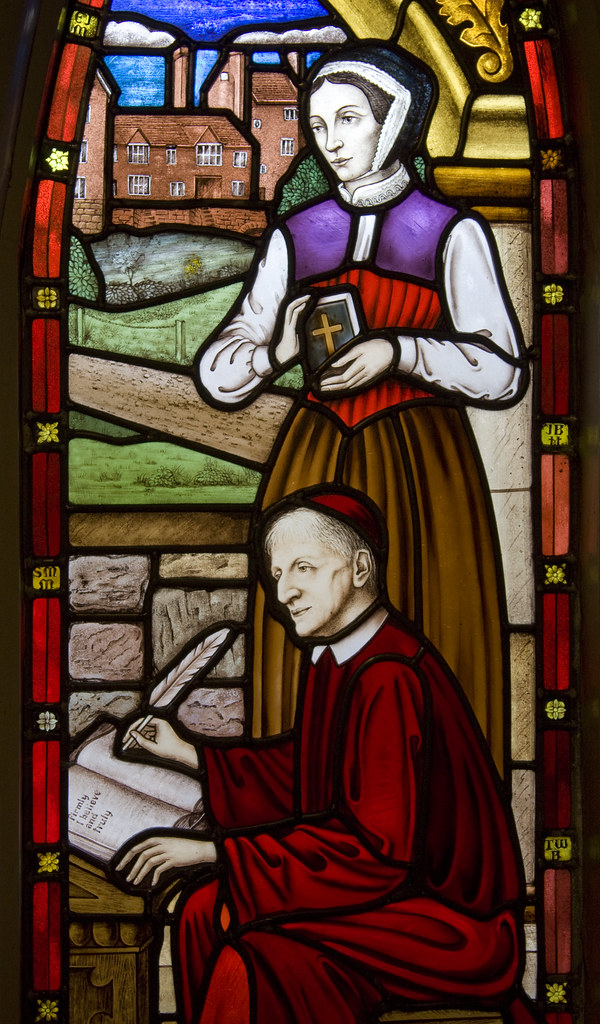
St Margaret Clitherow, whose feast is today (30 August) is depicted in this stained glass window from the Catholic church near the recusant Harvington Hall. She is shown with John Henry Cardinal Newman, the famous Anglican convert, who will be beatified by Pope Benedict XVI on 19 September 2010 in Birmingham. St Margaret of York is considered the first woman martyred under Queen Elizabeth's religious suppression. Margaret was raised a Protestant but converted to Catholicism about two to three years after she was married. According to her confessor, Fr. Mush, Margaret became a Catholic because she "found no substance, truth nor Christian comfort in the ministers of the new church, nor in their doctrine itself, and hearing also many priests and lay people to suffer for the defense of the ancient Catholic Faith." Margaret's husband, John Clitherow, remained a Protestant but supported his wife's decision to convert. Margaret practiced her faith and helped many people reconcile themselves back into the Catholic Church. She prayed one and a half hours every day and fasted four times a week. She regularly participated in mass and frequently went to confession. When laws were passed against Catholics, Margaret was imprisoned several times because she did not attend Protestant services. Other laws were passed which included a 1585 law that made it high treason for a priest to live in England and a felony for anyone to harbor or aid a priest. The penalty for breaking such laws was death. Despite the risk, Margaret helped and concealed priests. Margaret said "by God's grace all priests shall be more welcome to me than ever they were, and I will do what I can to set forward God's Catholic service." Margaret wanted her son Henry to receive a Catholic education so she endeavored that her son be sent outside the Kingdom to Douai, France for schooling. Such an act was considered a crime. When the authorities discovered their intention, the Common Council had the Clitherow house searched. They initially found nothing but later retrieved religious vessels, books and vestments used for Holy Mass. They also found a secret hiding place but no renegade priests. Still, Margaret was arrested. Margaret refused to plead and to be tried saying, "Having made no offense, I need no trial". English law decreed that anyone who refused to plead and to be tried should be "pressed to death". So on the morning of March 25, 1586, after sewing her own shroud the night before and after praying for the Pope, cardinals, clergy, and the Queen, Margaret was executed. She lay sandwiched between a rock and a wooden slab while weights were dropped upon her, crushing her to death. She did not cry out but prayed "Jesu, Jesu, Jesu, have mercy upon me. She died at age 30. Move by her saintly life, all her children entered the religious life. Anne became a nun. Henry and William both became priests. On October 25, 1970, Pope Paul VI declared Margaret a saint.
Link da imagem: https://ift.tt/35lPFEg
Fonte: Lawrence OP https://flic.kr/p/8wzZnv

Postar um comentário